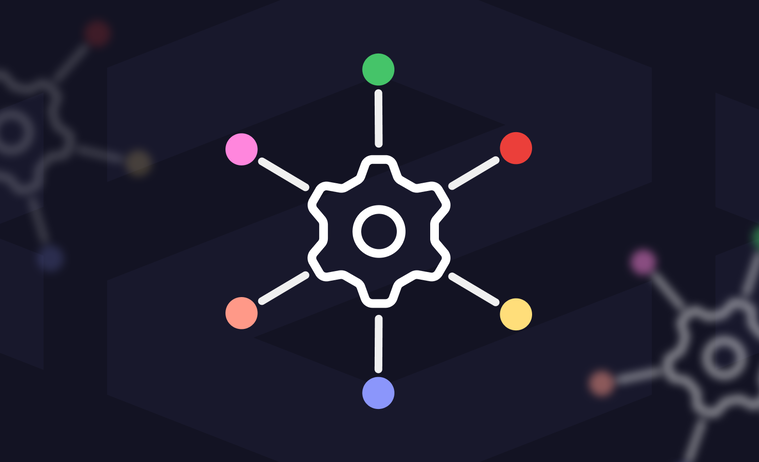How to Solve the Top 7 Microservices Challenges
Microservices are becoming increasingly popular these days. A microservice is an architectural approach to software development that regards a software application as a series of independent services. And all of these services are connected using well-defined APIs, which also enables them to communicate with each other. Indeed, businesses can effectively leverage microservices best practices to offer a large array of benefits, but building microservices comes with its own set of challenges.
In this article, we are going to discuss some common problems you might face during the development and usage of microservices. Additionally, we are going to suggest ways to address these issues, with a focus on novel methods powered by artificial intelligence (AI) and machine learning (ML).
Top microservices challenges and solutions
1. Service discovery and registry
Microservices are just one type of architectural style used for distributed computing. Here, the application is formed by combining various independent services that are capable of communicating through a network. When a customer wants to use this service, they must know the specific location of the network. In the case of one available location, there wouldn't be much of a problem. But if the location keeps on changing, then we have a very complex problem at hand.
To resolve this issue, the designers must install a service registry along with the database of every service network location. Service discovery and registry could also be accomplished using a third party with a common registry. A common registry will enable the customers to quickly discover the network locations of services. Such solutions are already implemented in the Kubernetes service and Netflix Eureka service registry.
How AI and ML can help
Machine learning algorithms can improve service discovery mechanisms by using historical data to predict optimal service instances. Through the analysis of service usage and performance patterns, machine learning models can recommend the most efficient service instances for request handling, which results in improved load balancing and reduced latency.
2. Unified access to services
As we already discussed, microservices are the combination of loosely connected multiple services. These services are rendered to a large number of customers. Not every customer would want the same thing in the same way. Everyone might have different requirements. For example, for a web application, you will need a set of information that is grained coarsely, but for a mobile application, you need a set of information that is grained finely. And things might get worse if these services are implemented with protocols such as REST and JMS.
To simplify the process of accessing these different services, you might need something called a unified access mechanism. This mechanism can be built by utilizing a simple API gateway as a single-entry point for every service associated with the microservices architecture.
To access the services, the customers would have to call the API gateway. Then the API will route the users to their requested services. On top of that, the API gateway also offers additional services like security metering, aggregation of services, and more. You can see such a mechanism implemented in Apigee, Amazon API Gateway, and Spring Cloud Zuul.
How AI and ML can help
AI-driven API gateways can optimize response times and resource utilization by intelligently routing requests to the most suitable microservice instances. Learning from traffic patterns, these gateways dynamically adjust routing strategies and maintain peak performance.
3. Authentication and authorization
Security will be one of the main concerns no matter what software services you are using. The same is true for microservices. To make your services secure, you can apply a simple centralized authentication service. It will ensure that all the customers who want to utilize the microservices are authenticated first. On the other hand, every single service should be charged with authorizing their customers as well.
How AI and ML can help
AI-powered security tools can enhance authentication and authorization processes by detecting abnormal access patterns and potential unauthorized access attempts. Machine learning models can analyze user behavior to establish baselines and flag deviations, identifying security threats before they materialize
4. Logging and debugging
To fulfill some of your needs, only a single service in microservices architecture can be enough, but other times, it may require multiple services to work together to meet your demands. In microservices, every service has its log. It would be overwhelming for a developer to go through these logs manually, aggregate all the services, and then troubleshoot the bugs.
The alternate way to accomplish logging and debugging is to play it smartly. All you have to do is use a simple logging service every service will be connected to for writing their logs. Some common examples of such technical implementation are Kibana, Logstash, and Elasticsearch.
How AI and ML can help
Machine learning algorithms leverage automated log analysis to pinpoint patterns and anomalies that could signify problems. This method fast-tracks root cause analysis and improves the precision of debugging efforts.
5. Configuration
Configuration in a microservices architecture can be complex due to the independent nature of each service. Each service requires individual configuration, which can be challenging when running the application in different environments without modifications. Configuration settings can include network locations, database credentials, environment variables, and other parameters, further complicating the process.
One way out of this jam is to enable centralized configuration services wherein every service is connected with this service to configure itself. Now this service must have a common configuration repository that allows the centralized service to read the configurations of all the services. One example of such a system is Kubernetes configmap.
How AI and ML can help
Dynamic configuration management is another process that can be enhanced through the use of AI. By predicting the effects of configuration changes and suggesting ideal settings, AI can minimize human error and find the optimal configurations for operating conditions.
6. Services communication
Another challenge you might face is that your services can't work together in sync to fulfill your needs. One possible cause for that is a lack of a communication medium between various services. There are three ways to resolve this issue and establish communication among microservices:
- Service mesh
- Point-to-point using API gateway
- Using a messaging event drive platform
How AI and ML can help
AI can be used to enhance inter-service communication through the analysis of traffic patterns and the prediction of potential bottlenecks. This can lead to improved performance and reduced latency thanks to recommendations on how to adjust communication protocols or service placements from machine learning models.
7. Testing
Testing the services can be challenging when there are a lot of them to deal with. If you want to conduct a unit test or an integration test, you can do it by either mocking the microservices individually or mocking the dependent APIs available for the test. You can conduct various mock tests with the help of Cucumber, BDD, WireMock, etc.
How AI and ML can help
AI-driven testing tools can improve the reliability of microservices deployments by intelligently selecting test scenarios based on code changes and historical defect data. This automated approach to test case generation and execution enhances both test coverage and efficiency.
Final thoughts
There can be a lot of problems when you are dealing with microservices, and we can hardly get to address a few. But the ones we discussed here are some of the common problems that you might face while developing or working with microservices. We hope that this article can be helpful to you in overcoming the microservices challenges.




 Please
fill out this field
Please
fill out this field













